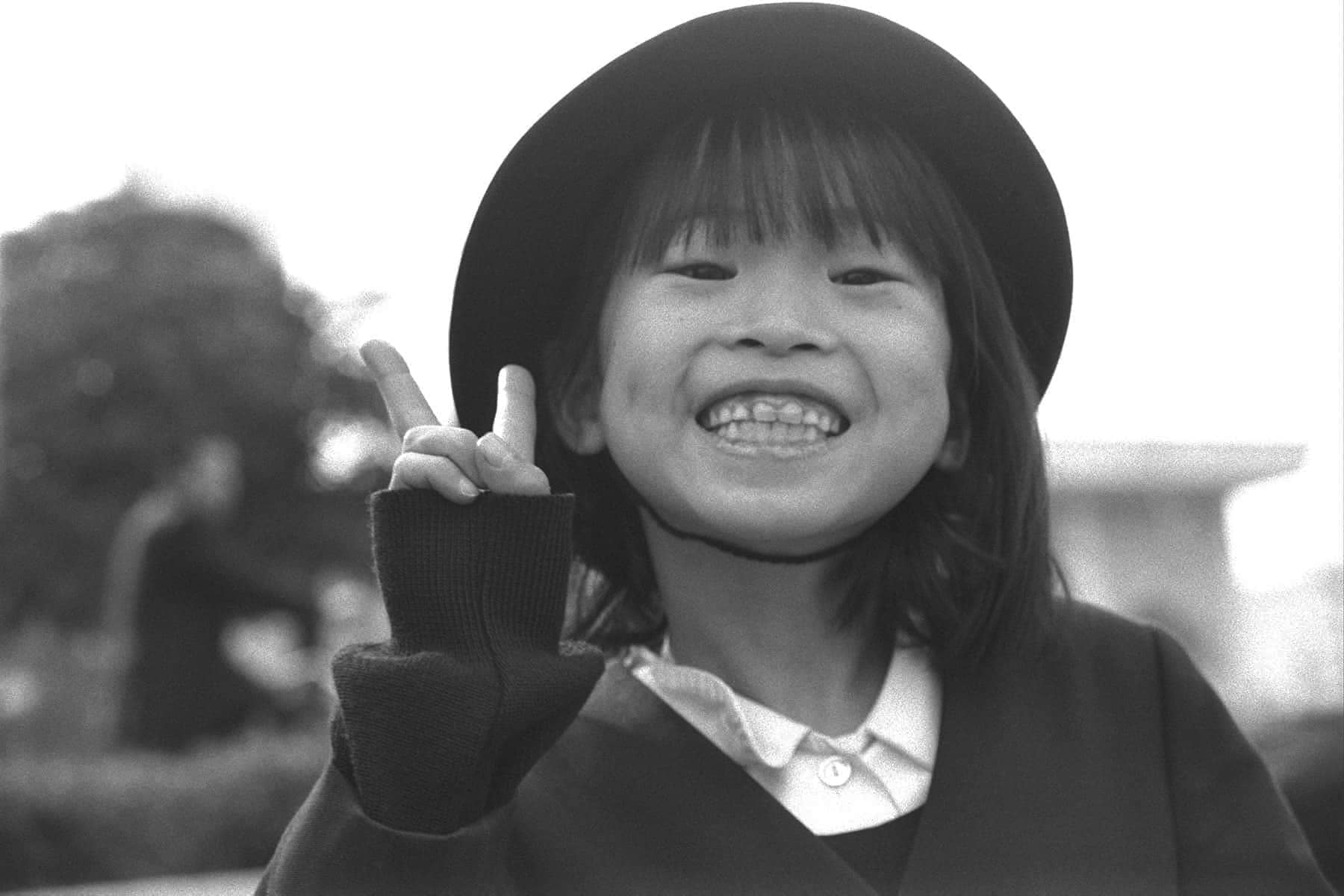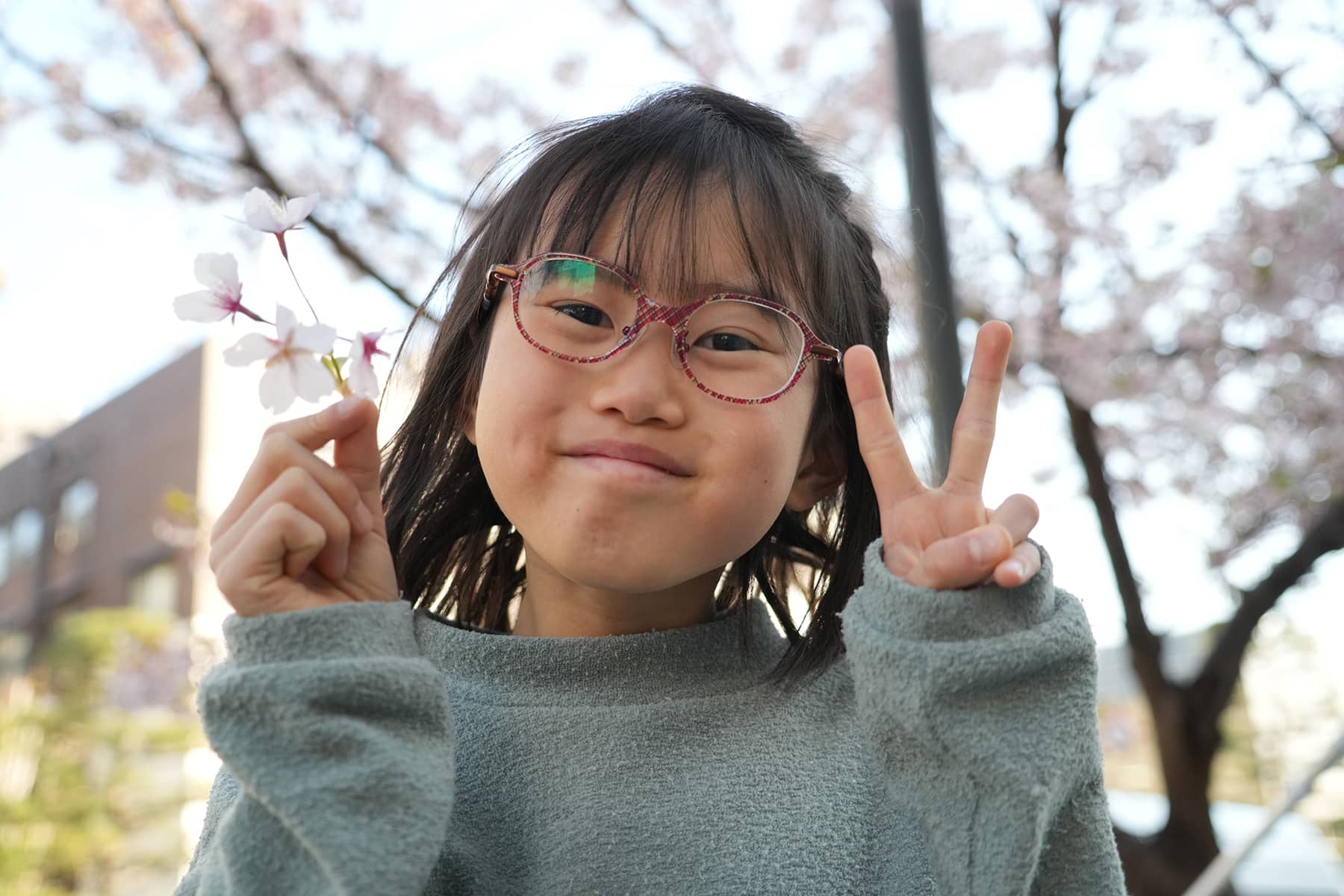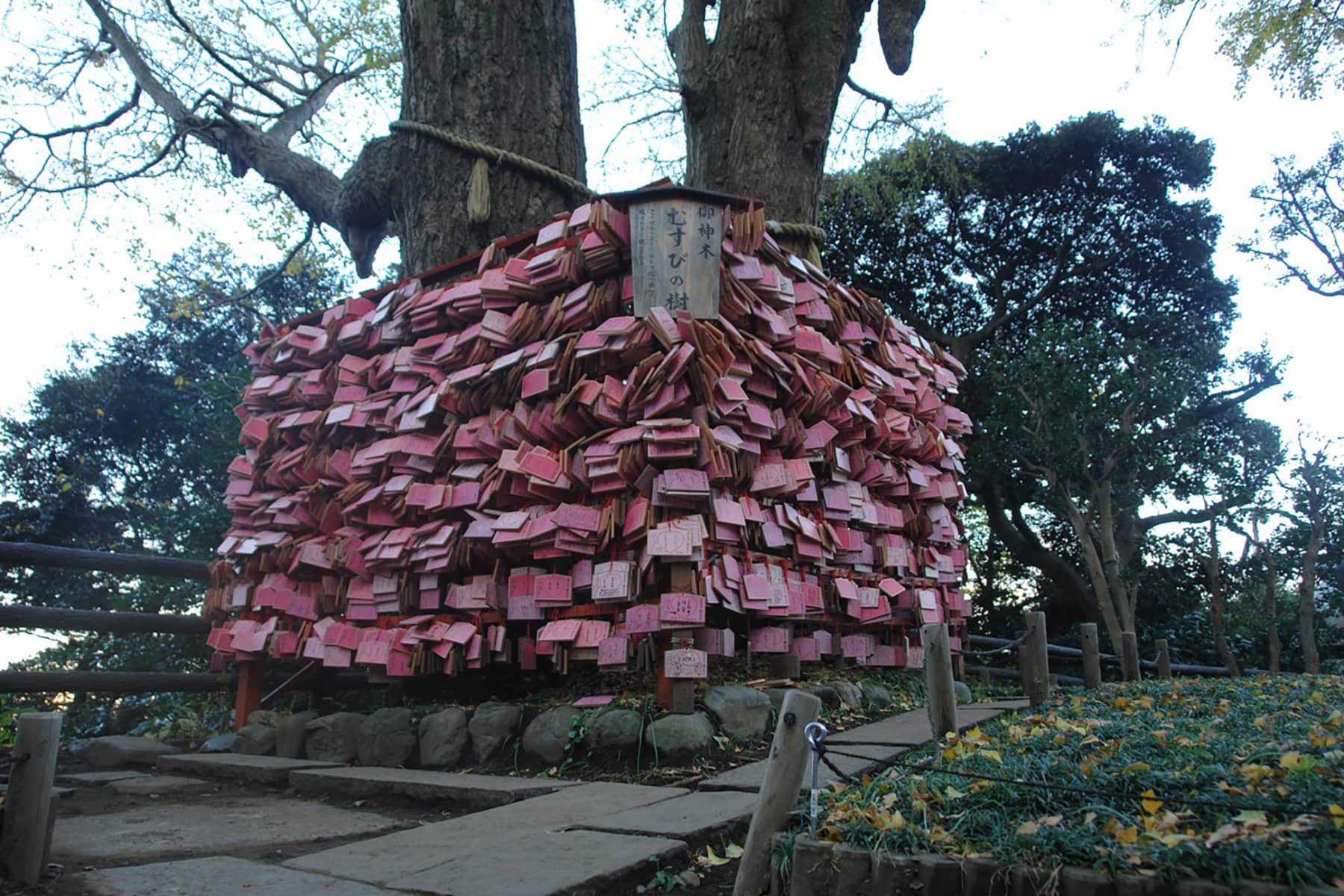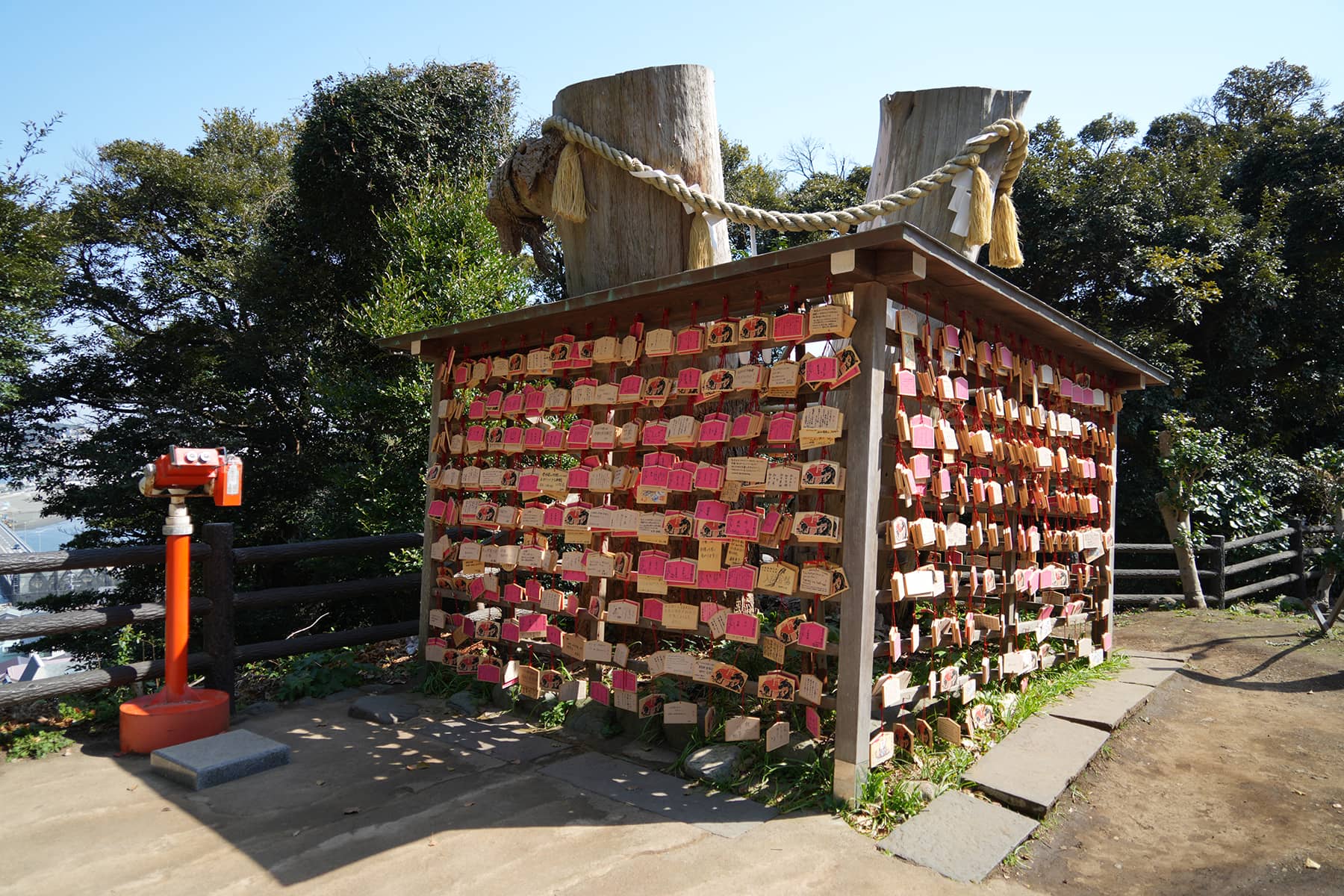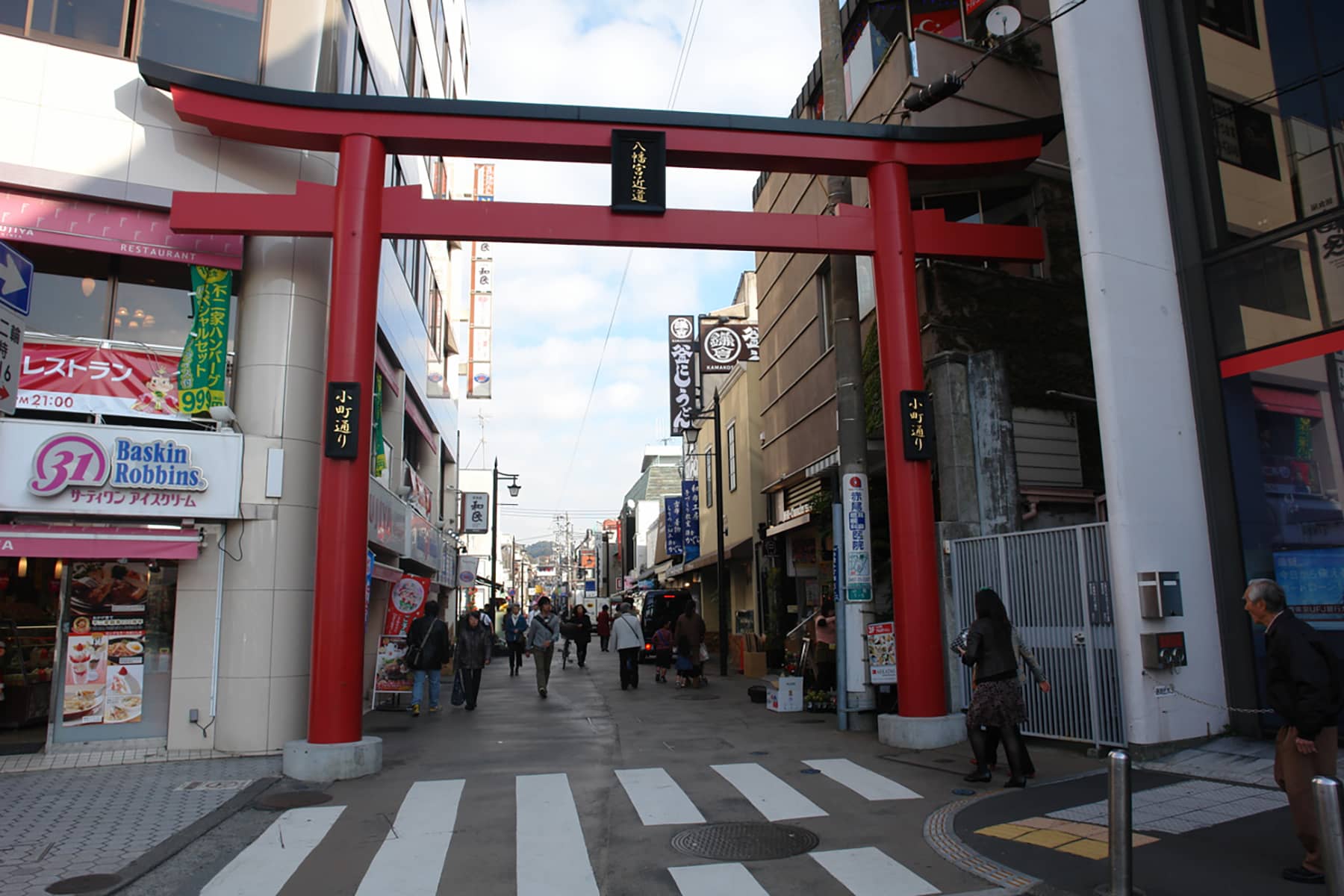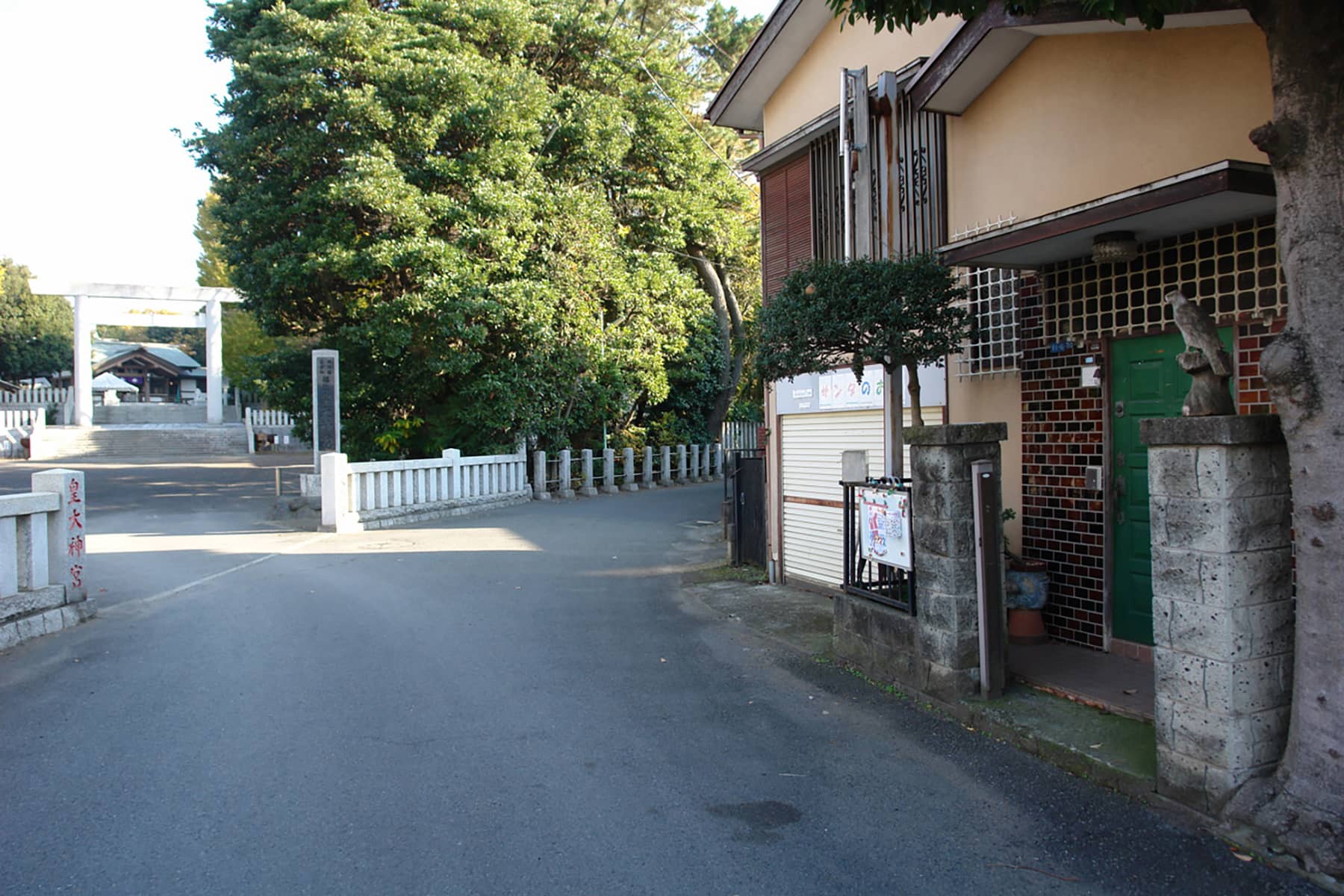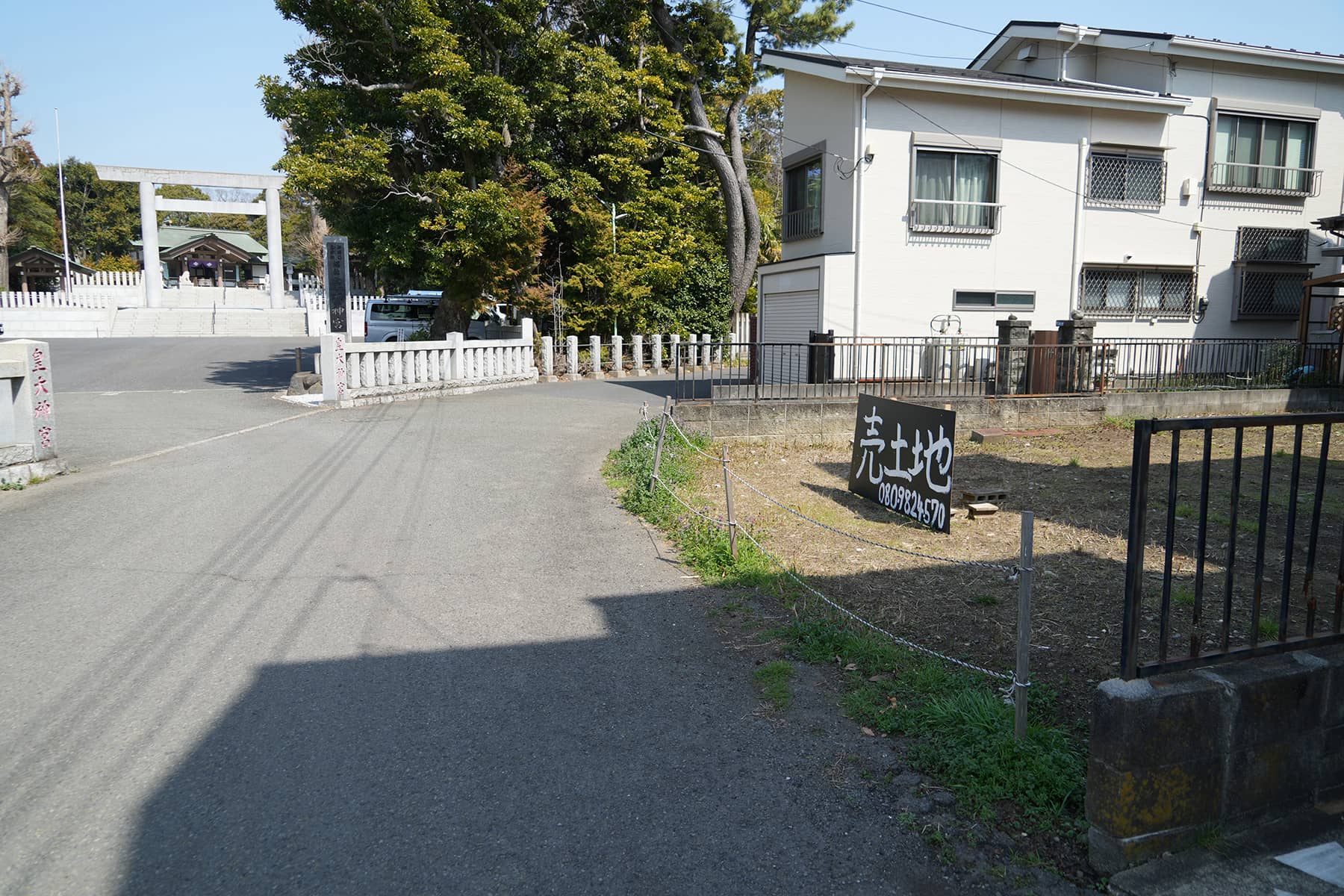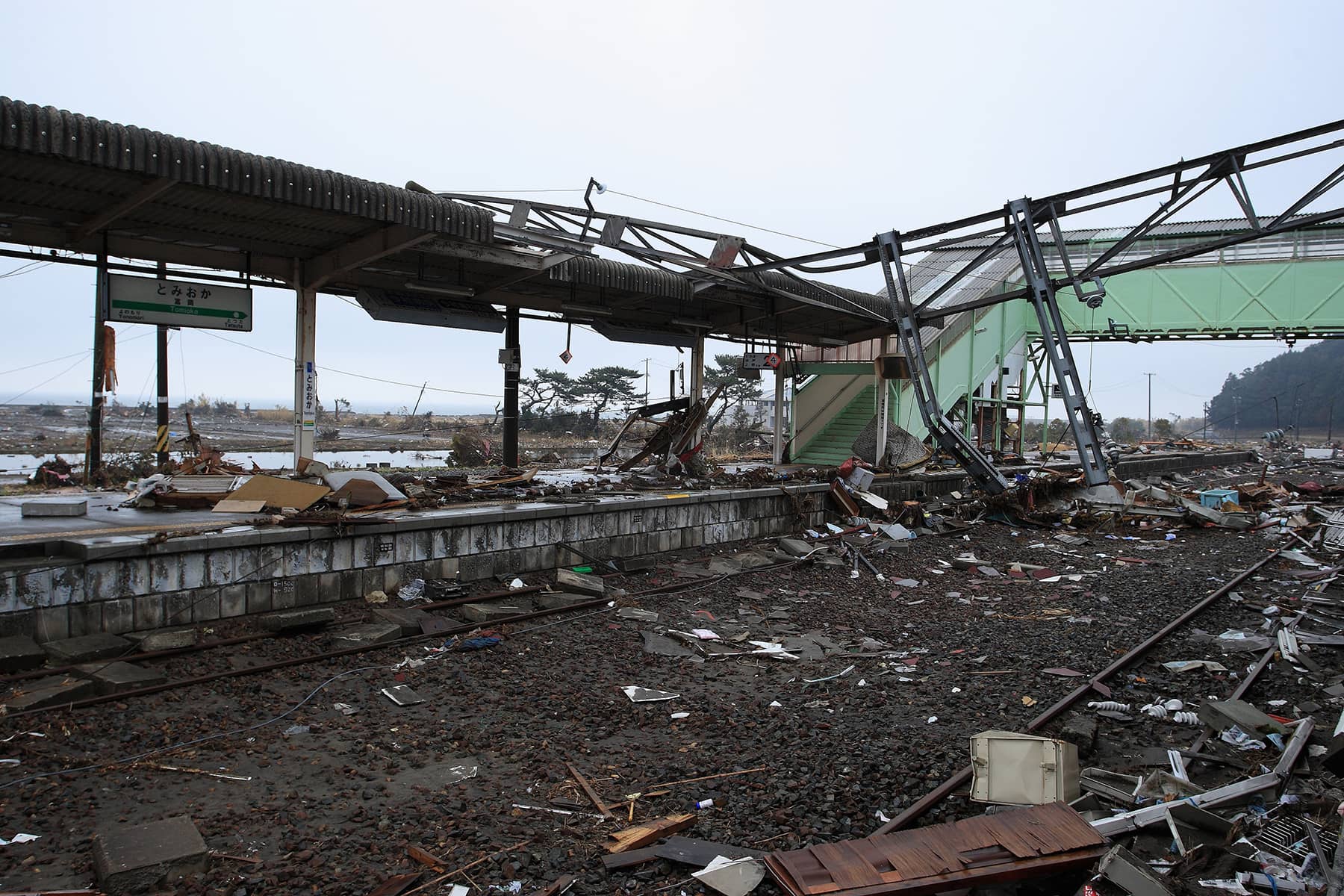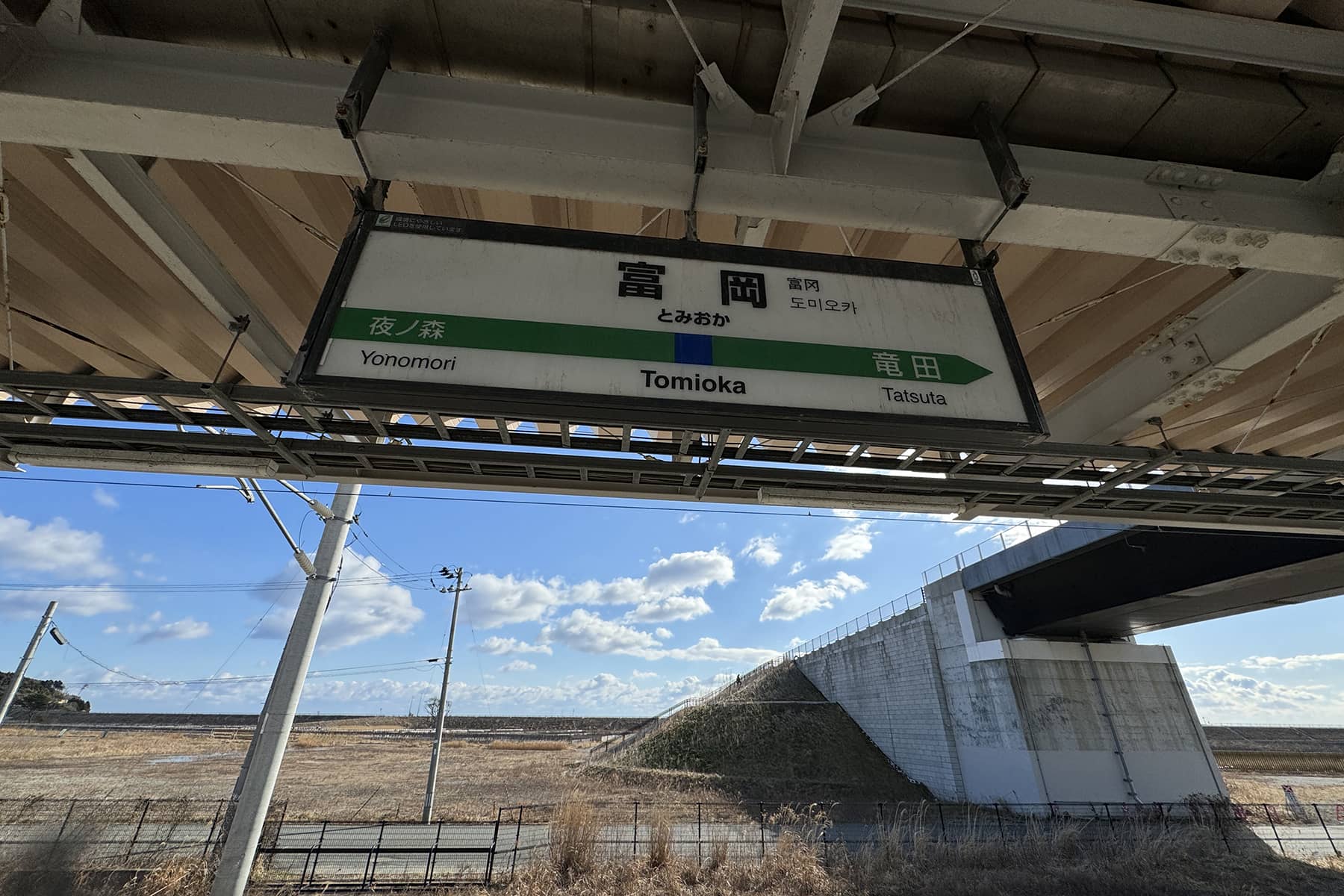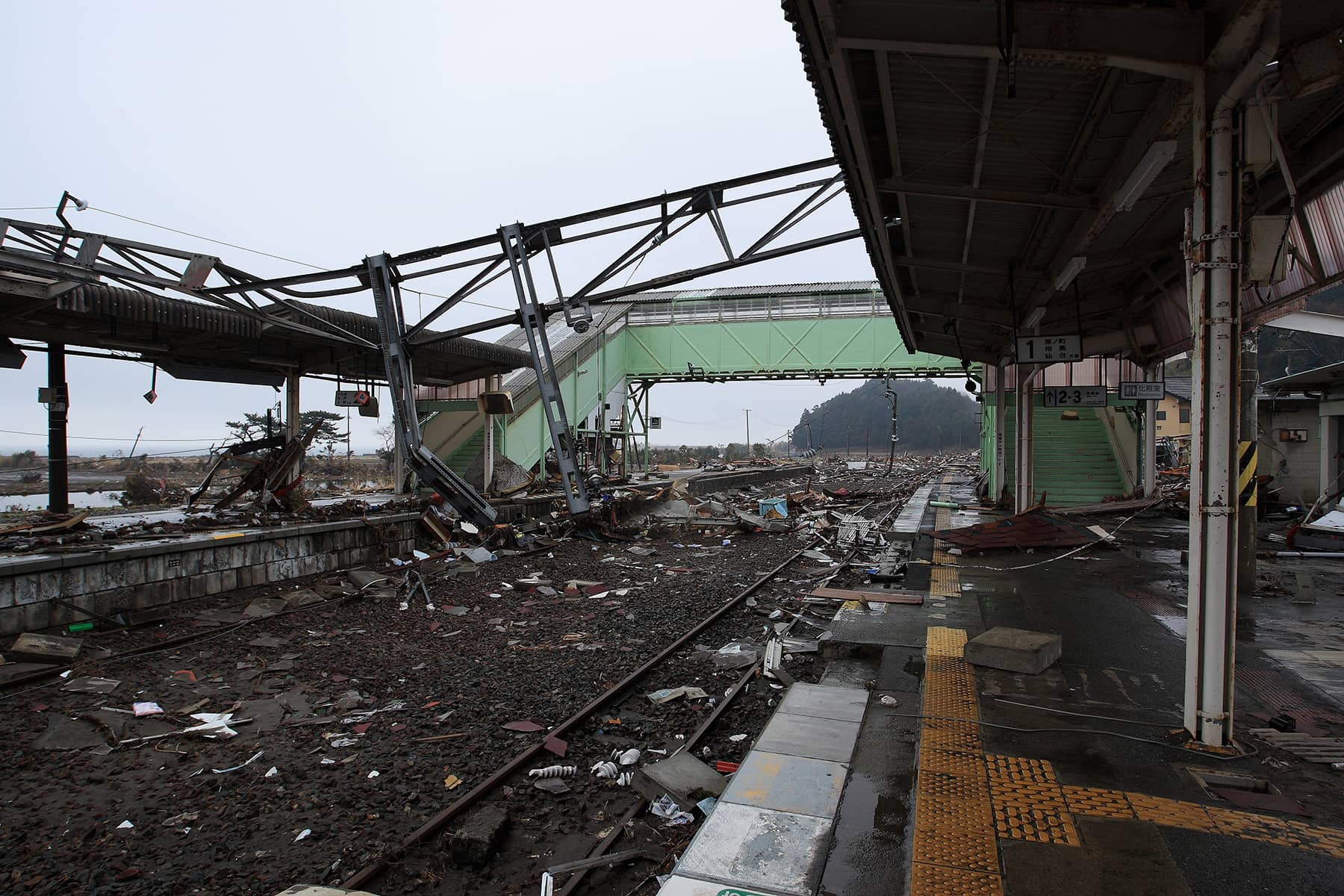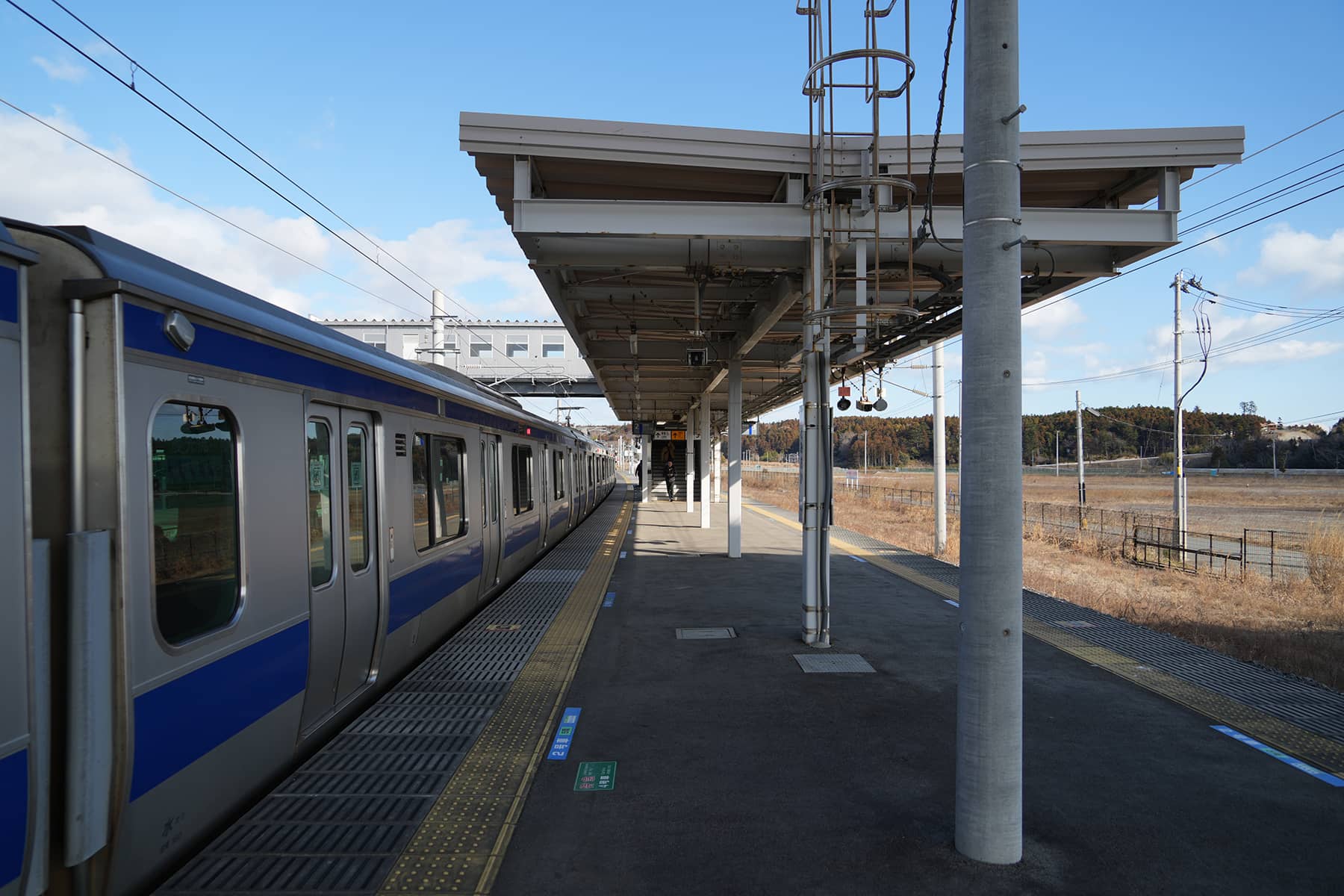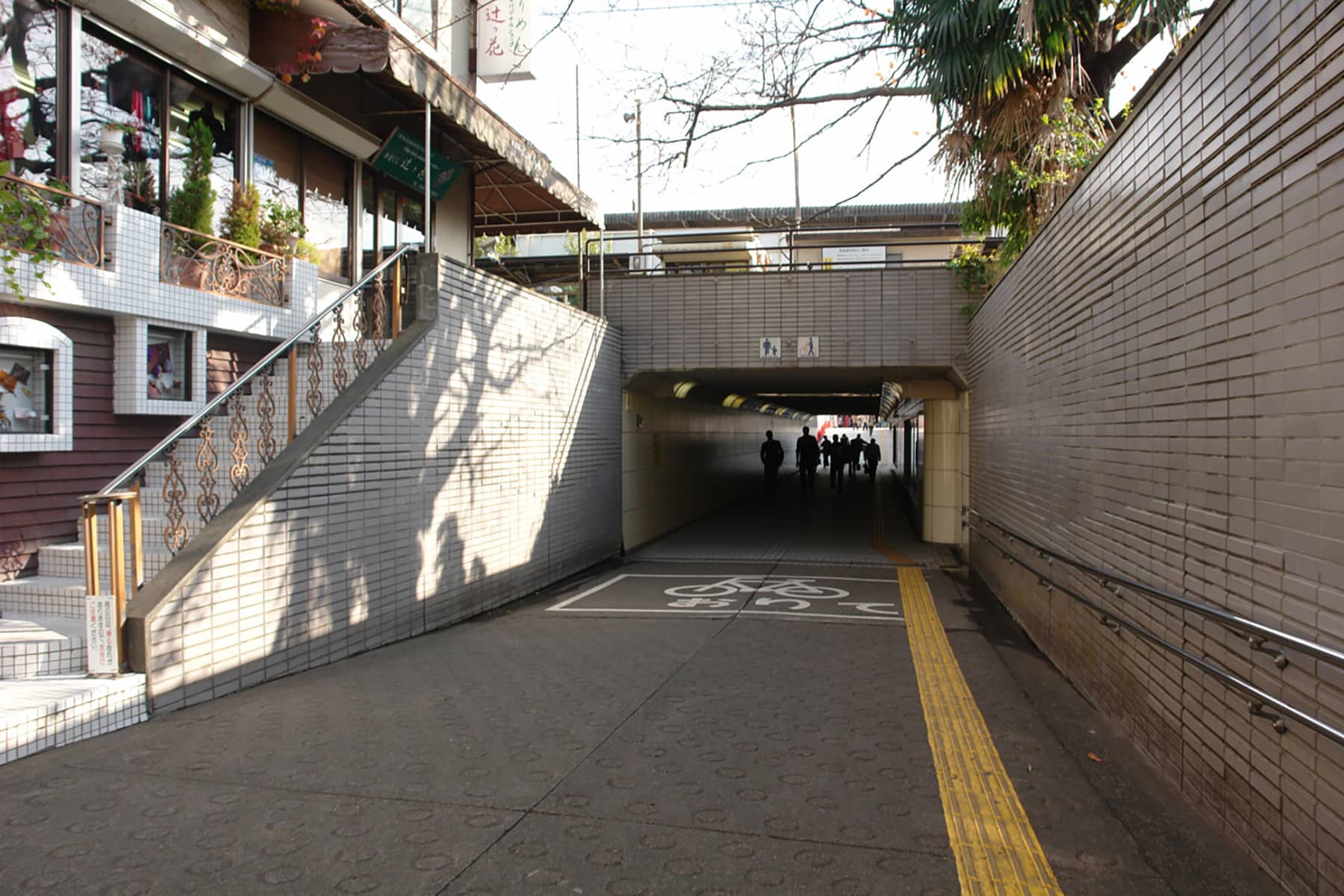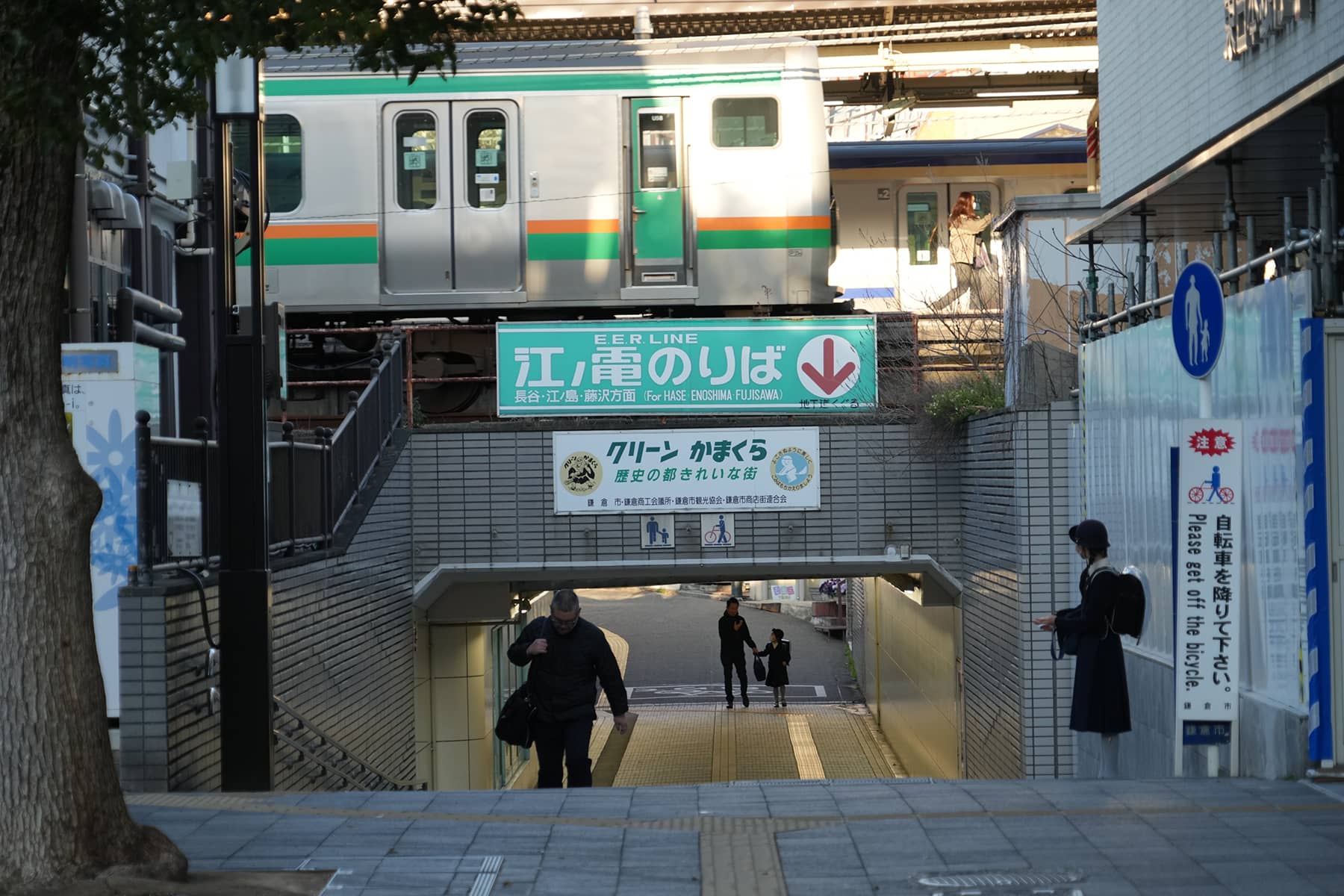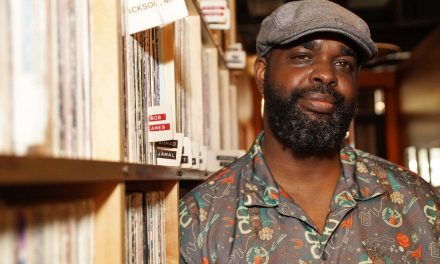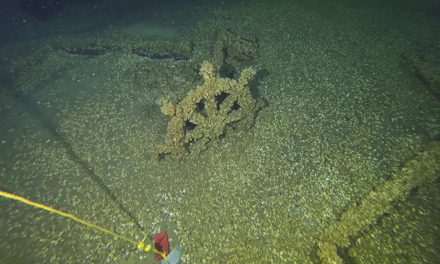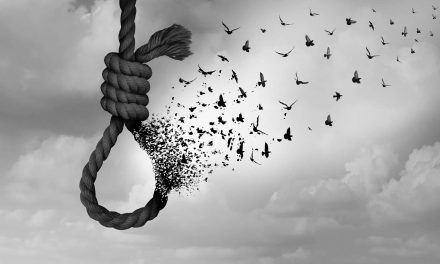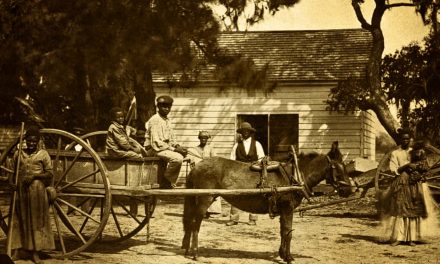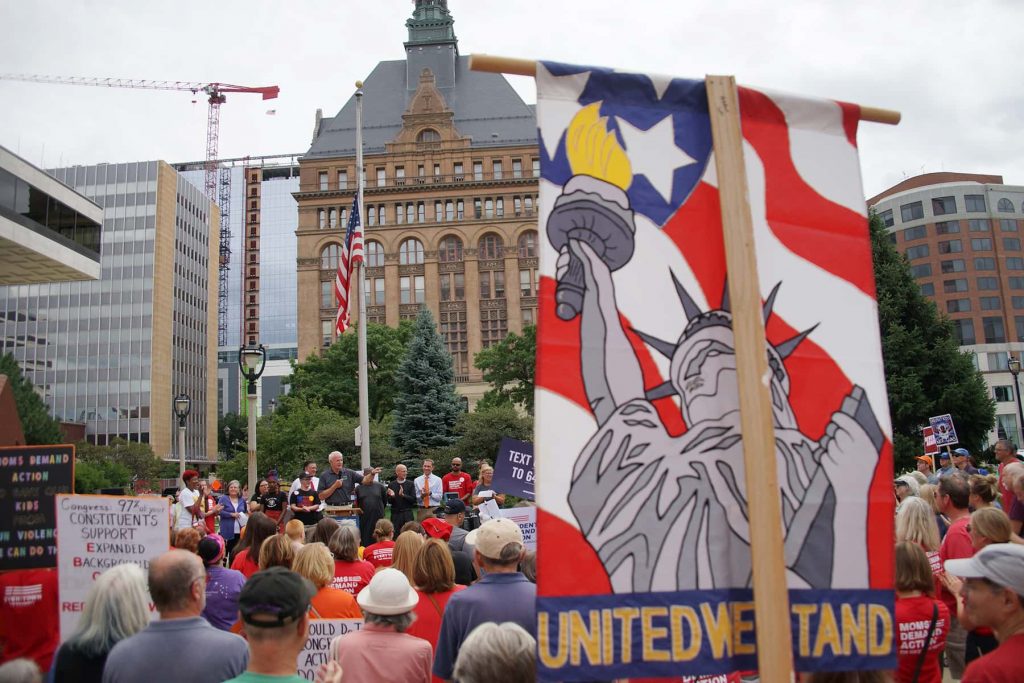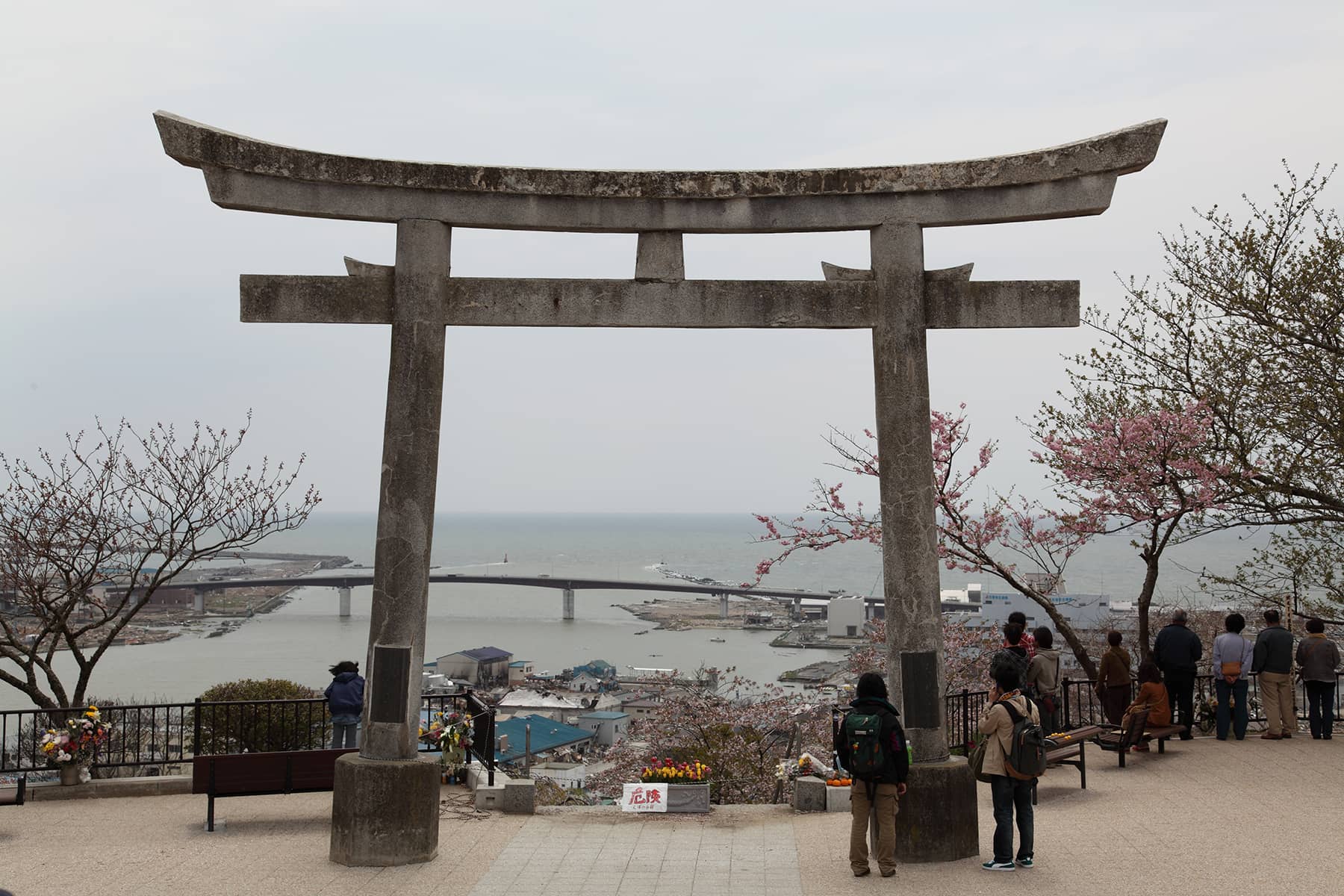
As a nation with a long history of seismic activity, Japan has faced numerous challenges due to earthquakes. Two of the most significant modern events were the 2011 Tōhoku earthquake and the 2024 Noto earthquake. And each tragedy had a direct impact on my life, both personally and professionally.
In late February of 2011, I was living in Kanagawa Prefecture and planned to move to Miyagi Prefecture in the spring. I found a place to live near Matsushima Station – mostly because “Matz” is pronounced “Matsu” in the Japanese language, and “shima” means island. I just liked the name connection, and being self-employed offered me the flexibility of location.
However, I was dependent on getting a special work visa, and I could not rent any place long-term until I had it. But a friend I knew in Kamakura had some property not too far away – and much closer than Kanagawa, so an empty apartment in Sendai was offered to me. It was located in the Wakabayashi ward near the Arahama district.
My certificate of eligibility (COE) and visa paperwork could take up to a couple of months to be processed. So I decided to use that time for a brief return to America, my first visit in a decade, to see my ill father. I expected the brief stay would be the last time I ever saw America again, or my father.
If things went according to plan, I would return to Japan sometime later in March. After that, I would not be in Sendai for long. The apartment there was mostly a place to keep my belongings while I was away, and somewhere I could stay until I could arrange my own apartment. It would also save me from having to return to Kanagawa, which was in the other direction.
My memories of those last days in Japan have become a bit blurred over time, so much was going on in my life prior to my departure. I obviously remember that we loaded a van with everything I owned and drove to Sendai, arriving in the middle of the night. We dropped everything off, locked it up, and then turned around so I could catch my flight the next day from Narita. I was only at the apartment for about an hour. I did not even stay long enough to use the bathroom.
After I landed in Seattle and had a long sleep, I woke up to learn that everything I just left behind was washed away. The tragic irony would not reach me until sometime later, but Matsushima was spared the brunt of the tsunami’s force because of the buffering effects of its bay islands. Or if I had instead left everything I owned in Kanagawa for when I returned, it would have been safe. I could have then moved into the original apartment as I intended.
The Butterfly Effect suggests that small initial differences can lead to vastly divergent outcomes. In Chaos Theory, a butterfly flapping its wings in Tokyo can potentially cause a distant tornado in Atlanta. It underscores the unpredictable nature of complex systems sensitive to their starting conditions.
I remember being in a fog as I tried to process the situation in Japan, from America. After 3.11 my friends told me to wait on scheduling when to come back, due to radiation, devastation, and because everything I had just left in Sendai was gone – with the town. There was also the matter of my work visa which I had to wait for, that would be issued by a government preoccupied with trying to solve a mushrooming nuclear crisis at Fukushima.
The iPhone had been released in 2007, but by 2011 I was still using a Japanese-made flip phone. So GPS location marking was not a common function or had its own app at the time. Other than a handwritten address to an apartment that no longer existed, and keys to doors of a building that no longer existed, in a neighborhood that no longer existed – where I had barely spent any time before leaving – I never once even considered returning to that spot. There was no point.
As the weeks passed and delivered me only bad news – including the death of my father, I accepted the inescapable truth of being stranded in America, unable to return to Japan, and with no way to recover anything I lost. So I did not take the most care in saving the address of where my temporary apartment had been located.
Within a few years, that friend who offered me the apartment would die tragically, so a lot of knowledge was lost. Over time I conflated the memory of the apartment’s location as Sendai. I was close and technically correct. But I had no reason to be GPS accurate since I never expected to visit, until recently.
Since at least 2018, I have contemplated writing about my 3.11 experience as the anniversary approached each year. But it was still too painful, and too personal, and too much to unpack. So I put it off until the next year, and then the next, and the next.
I had lost everything in the tsunami, but I was not actually there when everything happened. I suffered directly from the tragedy, but I was spared a lot of the up-close trauma that went with it. I was not even sure how to articulate the experience to people who were already too disinterested to listen.
Instead, I had a full plate of trauma in the form of culture shock to deal with, trying to adjust to America after being away for over a decade. At the time, that represented more than 1/3 of my adult life.
It would be almost a year before I truly accepted that I was stuck in America, so I would need to get on with my life. I could go anywhere to start over, but I chose to come home to Milwaukee. I had spent my early adulthood adapting to new and strange cultures, so once I saw Wisconsin as just another foreign country I was able to fit in.
I would joke at the time that at least I did not need to learn another language. But while I heard people speak English, my native tongue, they may as well have been speaking Klingon for all of my ability to comprehend. What people said had little connection to what they meant, I discovered.
After a few years and a couple more failed tries to move back, I decided that I had to let go of Japan. I was in the new world and there was no return to the old, so I needed to metaphorically burn my ships. I had a little angst about my situation for a while. Not because I felt my misfortune was unfair, but due to the indifference of the people around me. No one I knew or ever seemed to meet wanted to hear about my life overseas. They would flinch any time I would share my experiences. It was like nothing outside of Milwaukee mattered, so stop talking about it.
In a sense, I was peer pressured and socially trained to stay silent about that part of my life. So I stuffed those vibrant memories in little boxes and stored them in the dusty attic of my mind. Since I had only returned to America with what I could carry on the plane, I also was not burdened with physical reminders from my life that was.
After a lot of hard work and sacrifices, my life flourished in Milwaukee. I made my peace with where I was, despite several more attempts to move back to Japan over the years. Every so often I would contemplate a simple visit, but I had lost all of my direct connections. I had lived a complete life in Japan, and gone on to live a fulfilling life in Milwaukee. So while I could get on a plane and go, I lacked a motivating purpose.
I also became a bit superstitious over time, like it was my fate to never return and that was the price I had to pay. I knew it was silly, but I was also at peace with the idea because my journalism in Milwaukee allowed me to live my purpose. I reasoned that if the cost of being successful in my hometown meant I could never return to Japan – like some Brothers Grimm tale – then I would gladly accept that deal.
But it took the full-scale invasion of Ukraine to change my thinking. Instead of seeing limitations, I could refocus on possibilities. Aside from a brief stop in Canada in 2011 on the way to Alaska when I first returned home, I had not left America since. Going to Milwaukee’s sister city of Irpin in May 2022 to cover its liberation from a brutal Russian occupation was my first departure abroad in a decade.
At the time, I wrote about wondering if it was my curse to never leave America again for any destination – not just Japan. But over the following two years I would go on to report from Mexico, Jordan, Jerusalem, Türkiye, Poland, and Ukraine for a second time.
Most people in Milwaukee were able to transition from the isolation of the COVID-19 pandemic and back to the illusion of a normal life. In my experience, I transitioned from the pandemic to the civil unrest surrounding Black Lives Matter and the 2020 elections, before landing back into the pandemic. When I could finally transition out of the pandemic again, it was into war, conflict, and disasters.
Then on New Year’s Day 2024 a massive earthquake hit the Noto peninsula of Japan. I contemplated an assignment to Noto to report on the situation, but logistics made it too impractical and financially prohibitive to organize so quickly. I consoled myself by doing all I could to cover the disaster from Milwaukee.
When I reported from Antakya, the site of ancient Antioch which had been left in ruins, I wrote about my 2011 experience in Japan and shared some connections for perspective. But I was still reluctant to be too open or write too much about that part of my life. I remain reluctant even now to do so.
Since October of 2023 I have been expecting a third assignment to Ukraine. Between delays on the ground there and developments in Gaza – where I was also offered a photojournalism assignment and remain on a waiting list to go, I have been in the unpleasant mode of “hurry up and wait.”
By late January, with the expectation of weeks of waiting still ahead, I considered my options for a different assignment. One opportunity developed unexpectedly, but could not take place until later in the year. It was exciting, but many months away.
Then a proposal arrived, and I decided it was time for me to return to Japan after 13 years.
Ichi-go ichi-e is a Japanese four-character idiom that describes a cultural concept of treasuring the unrepeatable nature of a moment.
My earliest memories include Japan as an influence. Whether I was exposed to its culture in the form of monster movies and TV cartoons as entertainment, or to its controversial legacy in stories from World War II veterans who recounted their time fighting in the Pacific.
Japan has always been a part of my life, either distant or directly. There was never a time when I did not feel the pull of its gravity. So I can confidently say that Milwaukee has always been my home, even when I did not live here. But Japan has always been connected to my soul – or at least what the “idea” of Japan represented.
On March 11, 2011, a magnitude 9.0 earthquake struck off the coast of Tōhoku, unleashing a devastating tsunami that caused widespread destruction across northeastern Japan. The disaster was one of the deadliest and most powerful earthquakes in recorded history. The subsequent Fukushima Daiichi nuclear disaster compounded the catastrophe.
With a magnitude of 7.5, an earthquake struck the Noto Peninsula on January 1, 2024. Unlike the Tōhoku earthquake, the Noto event did not generate a large tsunami, and the immediate impact on nuclear facilities was minimal.
Aside from the damage and casualties in Noto, which were substantial, its biggest impact was the reopening of old wounds from 2011. Overshadowed by the COVID-19 pandemic, Noto renewed generational interest in the Tōhoku disasters.
“Each disaster teaches us something new. The journey from the Tōhoku region to Noto Peninsula is one dedicated to learning from the past to build a safer future.” – Dr. Tomoko Takeda
The photojournalism assignment for Japan was very ambitious, extensive, and would require my absence from Milwaukee for nearly two months. The series produced from the work was structured into four parts. Report on the 3.11 anniversary from Fukushima, report on the situation in Noto, report on my personal connection to 3.11 and the experience of returning to Japan after 13 years, and report in general on Japanese culture coinciding with the seasonal bloom of the cherry trees.
I was able to accomplish 3 of those 4 goals, and in hindsight realized the 4th objective was far too ambitious. But I tried and have no regrets. The result of our efforts is a 33-part series with hundreds of photos. And as it turned out, I was not cursed to never return to Japan. I found myself there again almost 13 years to the day that I had originally departed.
We arrived early in Tokyo to recover from the long trip and get back on our feet, before starting the weeks-long assignment that would find us in a different city each day. It was a treat, and a bit surreal, to stay right next to so many of the historic landmarks that I had visited over the years. I would have never imagined it possible.
The return stirred me with many thoughts and feelings. I had first visited Japan in 1996, and after doing the math could not believe it had already been 28 years. The irony of math is that I have technically visited Japan or lived there at some point over 4 consecutive decades – the 1990s, 2000s, 2010s, and now 2020s.
But it was while walking around the Tokyo Tower that the effect of time really hit me. I knew long ago that the little kids I had photographed in parks had grown up. I knew they had started families and had their own children.
Then I realized that it was now mathematically possible for that 12-year-old girl who I first photographed in Hiroshima in 1996 to be on the verge of becoming a grandmother. The trend in Japan has always been to start families young. So if she married after high school and her children married after high school, it was almost biologically possible. The realization, while only theoretical, made me feel that I was still too young to be so old.
I had many similar experiences, which I can only describe as nostalgic. In the megacities, trains and technology were cutting-edge. But in the rural and remote areas, it felt like I had stepped back in time to the 1990s. It was as if those areas had gotten all the hand-me-down infrastructure that I experienced when I first arrived in Japan.
I understood that the Fukushima part of the assignment would have unique challenges. It was far from a new situation so there would be different types of stories to tell. The iconic ghost homes abandoned after the nuclear disaster would mostly all be torn down, for example. In Türkiye, I was there in the early days of the disaster with the Red Crescent as everything was still messy and being figured out. The closest I would come to that situation would be in Noto, which logistically would be the last segment of the assignment.
During our travels through Fukushima over the next couple of weeks, I realized that I could not have returned to Japan any sooner than I did. All my life experiences, and photojournalism assignments, had prepared me for being there exactly at that time. I do not believe it was anything like destiny, just that I was my best self for that particular opportunity.
My insight, perspective, and even my skills in the field would not have been the same if I had come just two years earlier. By that same logic, I felt Japan was also not ready for me to tell its stories any earlier either. Many of the places I visited in 2024 were restricted until 2022 and 2023. If I had come before COVID-19, I would never have gained access.
Even though 3.11 had happened 13 years ago, it felt like I had fallen into some odd time distortion. Life had moved on, but many people were still recovering. And some places did remain frozen in time. Most disaster sites had been sanitized, while some were preserved. So I encountered either vast and empty plots of land where neighborhoods had once thrived, or I explored disaster relics that had been sealed as museums.
Disaster tourism was definitely growing across the region, but I was not sure if even the Japanese understood its economic impact yet or if it would be sustainable. It seemed like a natural development, and it was evident that a lot of effort was being put into that direction. The “3.11 Densho Road” is an example, referring to activities that use a network of disaster memorial facilities to conduct various projects relating to the Great East Japan Earthquake.
As we navigated around, I found it ironic that even though I now carried some of the most advanced technology available, my old travel habits were still the most useful. Pre-mapping destinations and having a good sense of direction were helpful in cities. In Sendai, when we could not find our coin lockers at the train station, technology came to the rescue. I had taken a photo of the locker number for reference, so I used the GPS location encoded in the image to navigate back to the exact spot using Apple Maps.
And when it came to rural areas, the tech was still helpful to get us started. But taking pictures of signs to use as visual navigation markers, and simply observing the lay of the land for reference points, often proved more reliable than Google Maps. Under many conditions, the app was a complete fail in realtime. Referring back to a photo of a train schedule, while primitive, was fast and reliable.
Each day we would relocate to a new hotel in a new city, so I had time to contemplate many things about Japan – and the path that led to my return. I would not say that every thought was an epiphany, but I did feel a lot of affirmation. I did not return to Japan to find myself, or to make peace with myself. I did not return to unlock any mystery or gain any knowledge. I had no ghosts to put to rest. And I felt no compulsion to make symbolic pilgrimages. But I did enjoy the adventure of it all.
The majority of our travels were outside major metropolitan areas, and I never saw a foreign tourist there once. But traveling to a new city every day did require sometimes passing through larger transit hubs. It could be a shock at times, going from standing on an empty platform at Yonomori Station to the literal crush of humanity in Sendai.
I have often encountered situations where out of site is out of mind. The world has moved on from 3.11. The world moved on from Noto about a week after it happened. But because we do not see a struggle daily, it does not mean the struggle has even come close to ending.
“This is what we always do. We always go in with our ideals, and we change the world. And then we leave. We always leave. But that ball, though, it keeps on bouncing,” to quote Tom Hanks from the 2007 movie “Charlie Wilson’s War.”
His meaning was about America abandoning its responsibilities, but I think the statement is still a brilliant example of human apathy. For survivors in Fukushima, that ball has been bouncing for 13 years. That was the kind of story I wanted to tell with photos and words. To remind people back in Milwaukee that the ball was still bouncing in Fukushima. And to be a witness. After a month or a decade, that ball is still bouncing.
We spoke with many people about their experiences on and after 3.11, and I witnessed what the impact of displacement looked like after a decade. I am far from an expert on Japanese culture or economics, and so I can only offer opinions based on observations. They are not facts.
The hardships I saw around Fukushima are complicated in different ways than in Milwaukee or even Jordan. There is no racism, and there are no refugee camps. But there is plenty of radiation.
A town like Futaba, 2.5 miles from the Fukushima Daiichi Nuclear Power Plant, could not grow economically until more people returned. But people are not so willing to return until more jobs are available. There seemed to be a lot of issues, socially and economically, that fell into a “chicken or egg” scenario.
Miyagi prefecture faced a similar dilemma as MCTS experiences in Milwaukee. More people would ride the bus line if they were more frequent. But buses cannot run more frequently until there are more people to ride them and economically support the frequency.
We are all guilty of symbolism. A 30th anniversary seems far more special than a 13th. The 10th anniversary of 3.11 came in the middle of the COVID-19 pandemic, when Japan was basically closed to outside visitors. We were told that after 2021, media interest in 3.11 noticeably faded. But because of the recent Noto earthquake, there was renewed public interest. So there was an unusually large news media presence for 2024, and the ability for Milwaukee Independent to be there came at a good time.
Our travel plans for Japan were divided into two parts, with some free time in the margins at the start and finish – and having a break in the middle for a few days. We would shift drastically from one part of the country to the other, passing through Tokyo as a transfer point.
So it made sense to spend a few days there to recover and explore before we moved on. But as we neared the second part of the assignment, I had growing concerns about what we would be able to accomplish. Not everything had gone according to plan or smoothly, but we were able to pivot, recover, and continue to accomplish a great deal. The dynamics of Noto would be far different, and complicated for our objectives.
Japan is a country built on public transportation, and quite literally it is possible to travel from one end of the country to the other, through every major city, and never leave a train station. But when it came to remote rural areas along the coast, it may as well have been America – requiring a car to get anywhere. And there was no bus or taxi service to be found in many locations.
For Noto, I came to believe that the second part of the plan could have been completed but at too high of a cost. We would need to explore very rural areas where finding transportation would be a challenge, where the problems were still fresh and emotions raw.
They were some of the same complexities that caused me originally to reject the idea of traveling to Noto in January, right after the earthquake happened. But I thought our planning would have solved or mitigated many of those issues. Fukushima had taught us a lot, and also taught us what we could expect. So my concern was that there would not be good resources to solve the problems we were likely to face in Noto.
As a team, we considered our options and everything still looked feasible on paper. It was never a question of had we done enough. But with limited time and resources, doing one thing often came at the sacrifice of something else. Noto was always the dark side of the moon for our planning. We had a connection there and an idea of what to expect, but it was very limited.
We realized early on that we had some blind spots and would not know the situation until we had our feet on the ground there. It meant we would need time and flexibility to adapt, and our original scheduling reflected that scenario. But it also depended on some infrastructure that we realized too late did not exist, which made it hard to know where our vulnerabilities would be.
With reluctance, it was decided to cancel the Noto segment of the assignment and cover it indirectly through other resources. We had been able to accomplish 75% of the original assignment, which was probably still 50% more than was realistic to complete.
The rest of the Milwaukee Independent team lived in Japan and could be home by Shinkansen within a few hours. I had been prepared to accomplish parts of the assignment on my own if that became a necessity. So the days that would have been spent in Noto were reallocated to time we could spend in Kanagawa – which consisted of Yokohama, Kamakura, Fujisawa, and Enoshima – as locations for revisiting my personal experiences and for showcasing Japanese culture, and the Sakura were already starting to bloom early.
Later in the week I found myself back in Kamakura for the first time since 2011, sleeping about a block over from the train station in the heart of the ancient city I had spent so much of my life exploring.
A few years after I had returned to Milwaukee, my friend had tragically died in a house fire. It was the home where I had lived with his family in Fujisawa. Technically, Enoshima is a suburb of Fujisawa and Kamakura is an adjacent municipality. But proximity makes conflating locations very easy in Japan. It is similar to how the city of Milwaukee gets used interchangeably with Milwaukee County.
I was eager to revisit many places all at once, but I knew the logistical requirements and necessity to pace myself. Enoshima would be a challenge. The island was pretty much a small mountain surrounded by water, and there were no shortcuts. Exploring it 13 years ago was exhausting when I was in better physical condition and lived nearby.
So I was pleased that my older self could reach every point on the island I intended, in the limited time I had, and still be in good condition to continue with the explorations I had planned after it.
One of those places was the home where I lived in Fujisawa, a bit further inland from the coast.
I have never returned to visit my childhood home in Georgia, a place that was very formative for me – and not so much in a good way. And my family’s farm in Milwaukee was sold long ago, and then redeveloped as a subdivision.
For Fujisawa, the home was not even there anymore either because of the fire. I did not feel compelled to visit a place that no longer existed. I had no weight that needed to be lifted from my shoulders. And there was nothing I sought to find closure about. I guess I just wanted to make the effort, to see it now with the eyes of who I am – not who I was 13 years ago. And, to pay my respects.
My friend who died was a pastor of a small church in the area. At the time his style would have been considered Fundamentalist, but I think today it would be seen as Conservative Evangelical. He was very likable and charismatic, and there were times when I wondered if the church was becoming a cult.
If he had lived to see 2016, I feel confident that he would have voted for Trump. So, I am certain that at some point we would not have remained friends. But however things would have gone between us, I can never deny what he gave to my life – a safe place to heal and get back on my feet.
It is awkward to give credit on a spiritual journey, because I feel we are merely fulfilling the parts that we were called to play. But regardless of his personal expectations or spiritual motivation, the result was that the experience in Fujisawa saved my life. My friend provided the environment for that to happen.
I read a news report at the time of his death that said his ashes would be scattered in the ocean. Without a headstone or specific location, going back to where the house had stood – to the place where he died – was as symbolic as any other. I understood the spot was a vacant lot now, after reviewing the Google Streetview images captured a few years ago. But the home had been directly across from a Shinto shrine and – even as a Christian – I always found them to be very spiritual and soothing locations.
I found the spot easily. It was not a far walk from Fujisawa Station, and I had traveled it many times years ago. The house was gone, with only a plot of grass and a sign saying that the land was for sale. I said a prayer for my friend, bowed, and then sat under an ancient tree at the shrine to process my emotions.
Even now I cannot articulate what I thought or felt. It was like I both understood and could not make sense of anything at the same time. When I walked away finally, I had not gained any insight or found any resolution. I was not looking for either. And maybe the beauty of the visit was that I was not supposed to discover anything. Maybe understanding will reach me in the future.
During the assignment in Japan, there were reminders of the life that I lost there. They were not easy thoughts, but they in no way diminished the life that I gained in Milwaukee. It is always easier to think about what could have been, instead of what is. That is especially true in times of uncertainty. But, at my very core I know my life has been better spent in Milwaukee.
That does not resolve my frustrations about Milwaukee. But I can overlook them to understand and appreciate my blessings. Japan is an amazing place, so it is highly probable that if I had stayed I could have done amazing things. I had already done amazing things, so it was not a stretch of the imagination to consider what could have been.
And while I cannot credit “Milwaukee” for making good things happen for me, I can credit being in Milwaukee when good things did happen to me. And, I guess even the not so good. I have to remind myself that sometimes when prayers are answered the answer can be “no.”
Being in Milwaukee was where I worked hard for many years to earn my reputation, and be available for when opportunities came along. So as I look back at my work, and struggles since 2011, I know that staying in Milwaukee was always the right choice. I have no regrets.
Through my faith, I always had the confidence that I was supposed to be exactly where I was to fulfill my purpose. So while the assignment to Japan was not “A Wonderful Life” where I got to see an alternative version of my life, the insight it offered did confirm what I had always believed. I am where I need to be. Until I need to be somewhere else.
None of my photojournalism over the past two years would have been possible if I had not been living in Milwaukee. While Japan has always been a part of my life, my life is bigger than just what Japan can offer. The idea of Japan, or what it represented, was always more important and influential than the place itself. It was a mentor when I needed guidance, and a muse when I needed inspiration.
During the Fukushima assignment, I saw where I had changed, where Japan had changed, and where my perception of Japan had changed. There is no avenue yet for me to apply that information, but I value the experience.
Since cherry blossoms, known as Sakura, only bloom for a couple of weeks each year they symbolize the beauty of renewal and the fleeting nature of life in Japan.
I do not know how 2024 will unfold, but it is easy to foresee that there will be many challenges ahead in an election year. It is not important right now that I completely understand all my lessons from this assignment to Japan. But one thing I have learned over and over again. The things I experience today are preparing me for what I will face tomorrow. I can draw a line that connects experience after experience, with the latter not being possible without the foundation of the former.
As for my recent experiences in Japan and what they have prepared me for, the answers are already waiting for me in the future. I am confident that at some point when I am ready to know, I will catch up with them.
3.11 Exploring Fukushima
- Journey to Japan: A photojournalist’s diary from the ruins of Tōhoku 13 years later
- Timeline of Tragedy: A look back at the long struggle since Fukushima's 2011 triple disaster
- New Year's Aftershock: Memories of Fukushima fuels concern for recovery in Noto Peninsula
- Lessons for future generations: Memorial Museum in Futaba marks 13 years since 3.11 Disaster
- In Silence and Solidarity: Japan Remembers the thousands lost to earthquake and tsunami in 2011
- Fukushima's Legacy: Condition of melted nuclear reactors still unclear 13 years after disaster
- Seafood Safety: Profits surge as Japanese consumers rally behind Fukushima's fishing industry
- Radioactive Waste: IAEA confirms water discharge from ruined nuclear plant meets safety standards
- Technical Hurdles for TEPCO: Critics question 2051 deadline for decommissioning Fukushima
- In the shadow of silence: Exploring Fukushima's abandoned lands that remain frozen in time
- Spiral Staircase of Life: Tōhoku museums preserve echoes of March 11 for future generations
- Retracing Our Steps: A review of the project that documented nuclear refugees returning home
- Noriko Abe: Continuing a family legacy of hospitality to guide Minamisanriku's recovery
- Voices of Kataribe: Storytellers share personal accounts of earthquake and tsunami in Tōhoku
- Moai of Minamisanriku: How a bond with Chile forged a learning hub for disaster preparedness
- Focus on the Future: Futaba Project aims to rebuild dreams and repopulate its community
- Junko Yagi: Pioneering a grassroots revival of local businesses in rural Onagawa
- Diving into darkness: The story of Yasuo Takamatsu's search for his missing wife
- Solace and Sake: Chūson-ji Temple and Sekinoichi Shuzo share centuries of tradition in Iwate
- Heartbeat of Miyagi: Community center offers space to engage with Sendai's unyielding spirit
- Unseen Scars: Survivors in Tōhoku reflect on more than a decade of trauma, recovery, and hope
- Running into history: The day Milwaukee Independent stumbled upon a marathon in Tokyo
- Roman Kashpur: Ukrainian war hero conquers Tokyo Marathon 2024 with prosthetic leg
- From Rails to Roads: BRT offers flexible transit solutions for disaster-struck communities
- From Snow to Sakura: Japan’s cherry blossom season feels economic impact of climate change
- Potholes on the Manga Road: Ishinomaki and Kamakura navigate the challenges of anime tourism
- The Ako Incident: Honoring the 47 Ronin’s legendary samurai loyalty at Sengakuji Temple
- "Shōgun" Reimagined: Ambitious TV series updates epic historical drama about feudal Japan
- Enchanting Hollywood: Japanese cinema celebrates Oscar wins by Hayao Miyazaki and Godzilla
- Toxic Tourists: Geisha District in Kyoto cracks down on over-zealous visitors with new rules
- Medieval Healing: "The Tale of Genji" offers insight into mysteries of Japanese medicine
- Aesthetic of Wabi-Sabi: Finding beauty and harmony in the unfinished and imperfect
- Riken Yamamoto: Japanese architect wins Pritzker Prize for community-centric designs
Lее Mаtz
Lее Mаtz
Enase (via Shutterstock) A Shinto Torii gate at Hiyoriyama Park, overlooking the tsunami-devastated city of Ishinomaki where 3,700 people died in March 2011. It sits at the peak of Mount Hiyoriyama, home to Kashimamiko Shrine where generations of fishermen have prayed for safe passage.
3.11 Exploring Fukushima: The Tōhoku region of Japan experienced one of the worst natural disasters ever recorded when a powerful earthquake was followed by a massive tsunami, and triggered an unprecedented nuclear crisis in 2011. With a personal connection to the tragedies, Milwaukee Independent returned for the first time in 13 years to attend events commemorating the March 11 anniversary. The purpose of the journalism project included interviews with survivors about their challenges over the past decade, reviews of rebuilt cities that had been washed away by the ocean, and visits to newly opened areas that had been left barren by radiation. This special editorial series offers a detailed look at a situation that will continue to have a daily global impact for generations. mkeind.com/exploringfukushima

